‘Devotional Citation’ & Sustainable Praxis
by: Storm Greenwood , December 13, 2021
by: Storm Greenwood , December 13, 2021
My ‘devotional citation’ praxis exists at the intersection of visual art and queer decolonial feminist scholarship. In its earliest iteration in 2017 it involved devotionally embroidering citations from scholarly and poetic texts and gifting them back to the scholars and writers who wrote them. Whilst gifting has remained a central strand of the work, over time it has developed into a more complex critical devotional praxis, through which I seek to honour and illuminate the words and materials that make my thinking, creating and becoming possible.
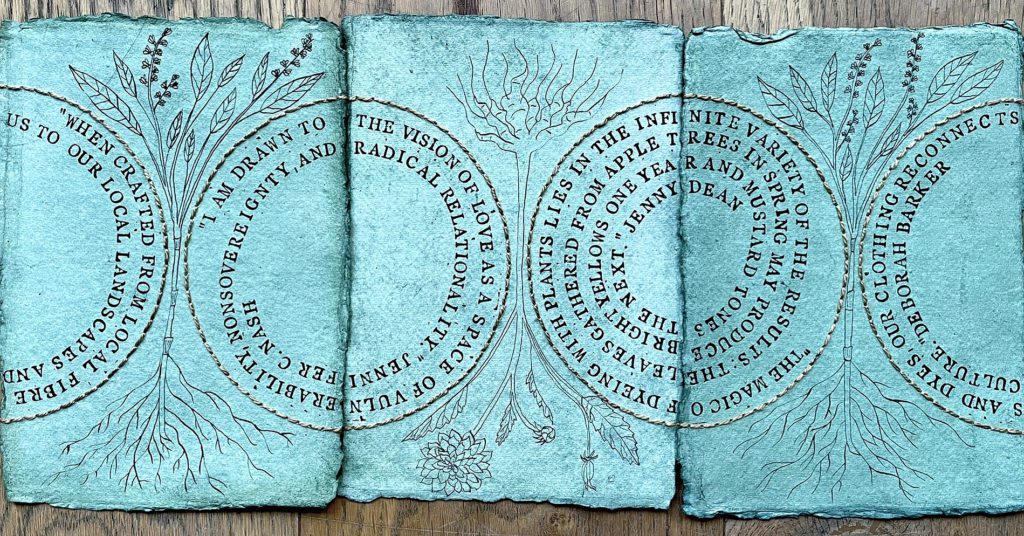
‘Devotional citation’ is a queer feminist decolonial material praxis. ‘Devotional citation’ honours the inherent sociality and imminent chorality of scholarly reading and critique. ‘Devotional citation’ is a secular-sacred practice of praise. ‘Devotional citation’ is a form of material textual inhabitation. ‘Devotional citation’ is a methodology for slow and reciprocal devotion. ‘Devotional citation’ seeks to intervene in the commodification of study. ‘Devotional citation’ aspires towards a gift economy. ‘Devotional citation’ embraces study for the pure joy of engagement. ‘Devotional citation’ draws out and cultivates what I call an ‘expanded literacy’.
If literacy in its most basic sense is the ability to read and write, then an ‘expanded literacy’ is one that enables the literate to read and write multimodally. To this end, I have sought to cultivate an ‘expanded literacy’ that includes embroidery, painting, printing, singing and performing alongside textual work. Over time this ‘expanded literacy’ has exerted pressure on the practice, asking that the citational field be widened so that the straightforward path of the textual to the material, became necessarily complicated by the honouring of the material as an equal participant in the co-creation of the work. Thus ‘devotional citation’ has moved from a practice honouring text, to a practice honouring the entangled nature of text, flesh and materiality. This move was not only a result of the pressures exerted by multimodality, but also of the critical texts which I have sought to learn from and illuminate.
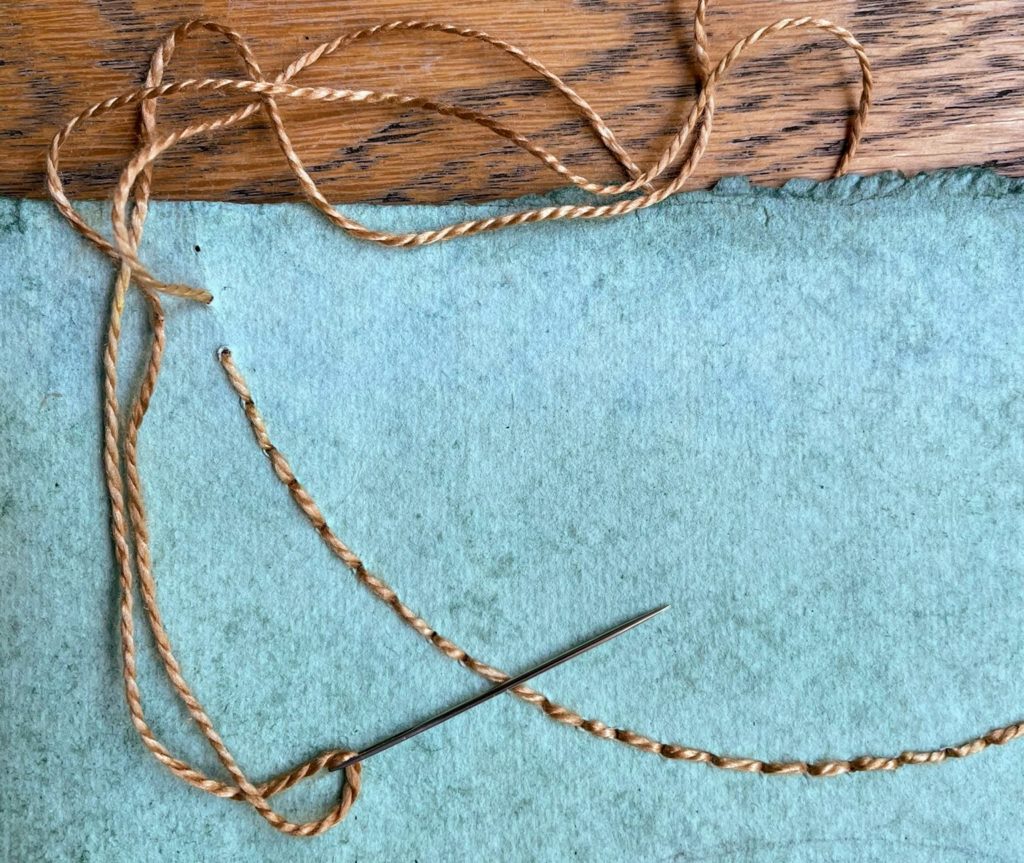
Building on my existing gifting practice, over the past two years I have been working on a series of illuminated manuscripts featuring citations predominantly from black feminist, decolonial, queer and experimental texts, from scholars such as Sarah Jane Cervenak, ashon t. crawley, alexis pauline gumbs, Fred Moten and Amber Jamilla Musser. Learning about the entanglement of racial justice and global capitalism with climate justice led me to realise that I needed to interrogate not just how I was studying, but with what materials I was studying. My early illuminated manuscripts were made using generically available art supplies, many of which contained micro plastics, arrived packaged in plastic and/or contained naturally occurring products which were farmed in other countries, with little information available about the ethics of their sourcing or the human labour involved.
Once I turned my gaze towards the material, it did not sit comfortably with me to write and theorise-through-making about freedom, queerness, black feminism and the richness of the margins using materials that cause degradation to marginal communities through the impact of climate change and/or through the use of exploitative production lines. Through conversations with my extended communities in farming, natural dyeing and climate justice, I have begun to slowly move towards using naturally and locally sourced materials. We live in a system that normalises and invisibilises exploitation and often makes it easier and cheaper for us to access materials sourced through non ethical supply chains than to work in sustainable ways. In order to make different choices we need the time, energy, access to information and monetary freedom to do so. Hence, I have not given away all my art supplies and instantly rushed to buy ‘better’ ones, but rather as I run out of each product or come to create a new pieces, I am researching the environmental and human cost of the products I wish to use and discovering if there is an ethical replacement.
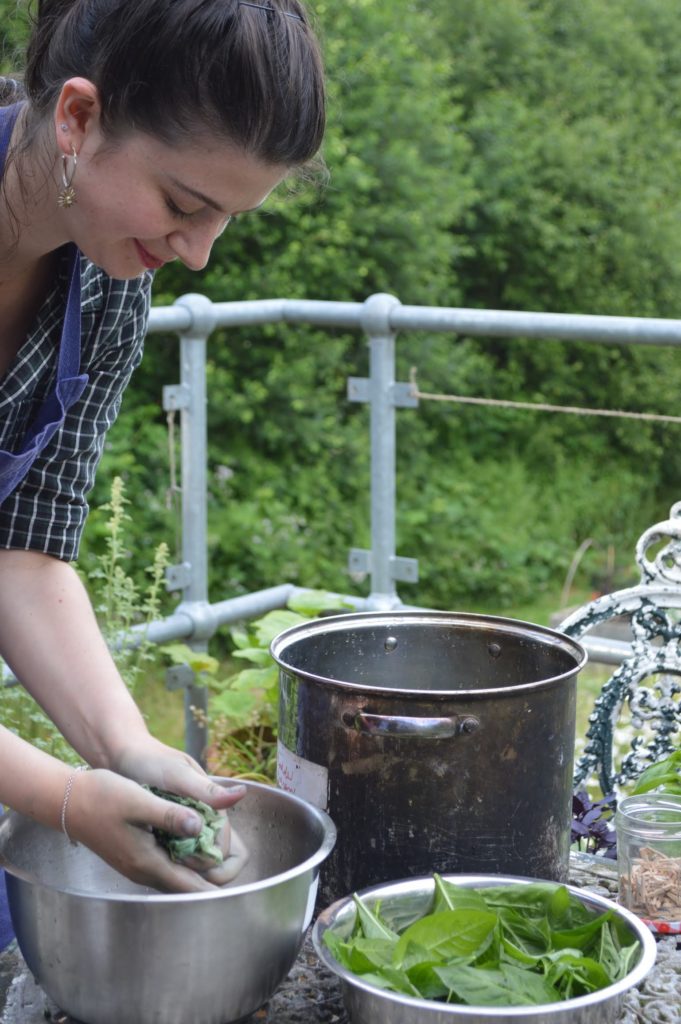
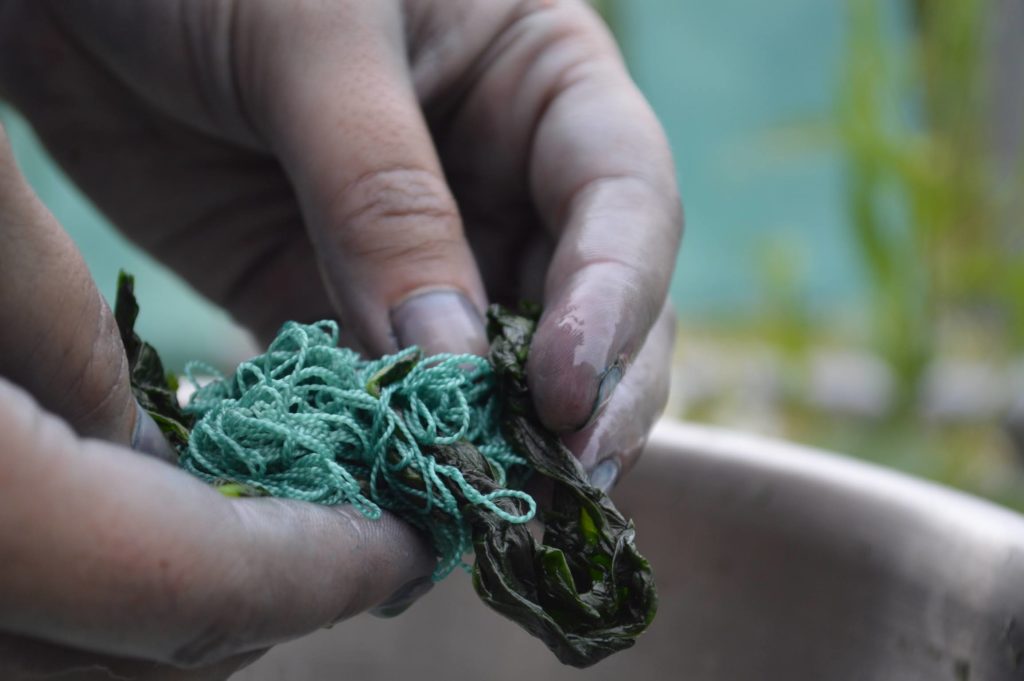
Thus far I have been experimenting with dyeing materials made with natural fibres, such as cotton rag paper and silk cloth, using Japanese indigo (persicaria tinctoria). After attending a workshop at Indigo Garden London, where I learned how to approach fresh leaf indigo dyeing, I was fortunate to be gifted an indigo plant by natural dyer and historian Jenny Dean, with which I have dyed both cloth and paper. My mother, natural dyer and researcher Deborah Barker, then gifted me with a beautiful silk thread, which she had dyed a golden yellow, using dahlias from Plaw Hatch Farm, where my sister Gala Bailey Barker is a shepherd. Finally, I have been able to source natural inks and pigments from London Pigment and The Wild Pigment Project’s natural pigment subscription Ground Bright.
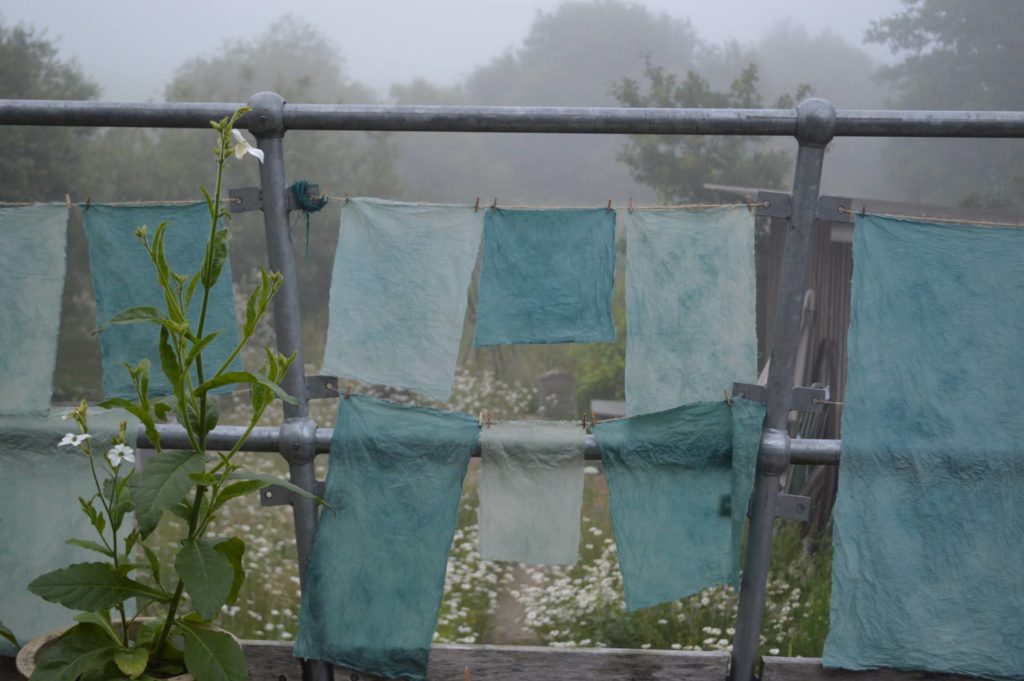
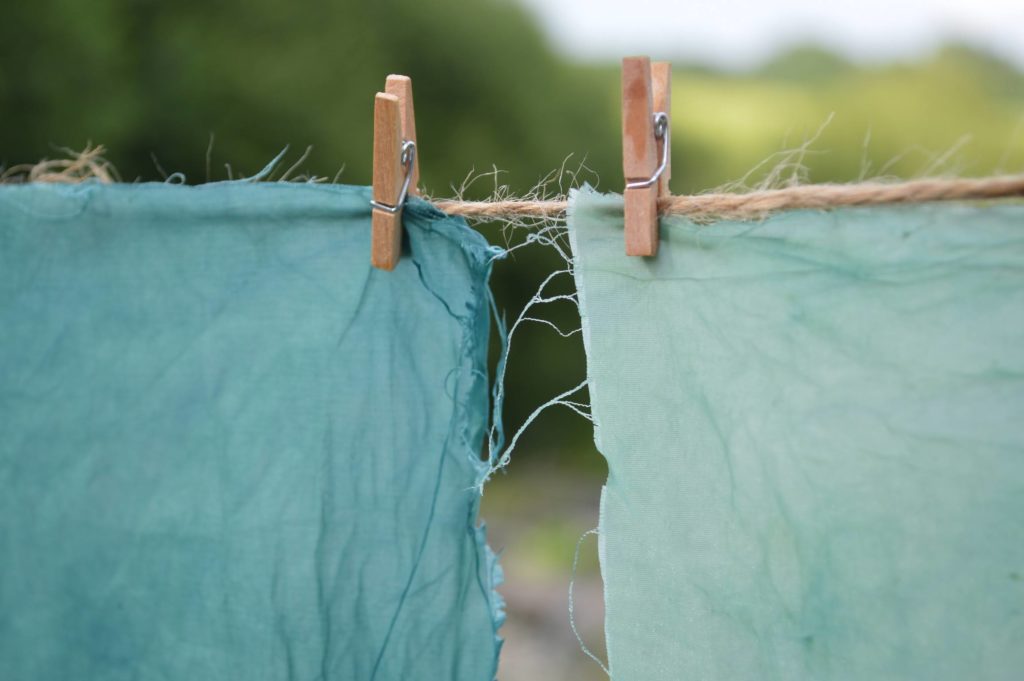
The first piece I made using predominantly natural materials was titled Black Feminist Sacred Sediments and is pictured here. The work features a citation from a 2011 article by black feminist scholar jennifer c. nash entitled Practising Love: Black Feminism, Love Politics, and Post-Intersectionality. Since first reading the piece in 2017, it has been an important companion in thinking and creating. Furthermore, nash’s 2019 book, black feminism reimagined: after intersectionality, has been a foundational work for my doctoral research and in particular her writing on the critic has aided me in my own explorations of critique as an inherently social, material and fleshy practice. It was also nash’s powerful writing on black feminist love-politics and the centering of love as a methodology for care, justice and social change, that led me towards re-examining how I work.
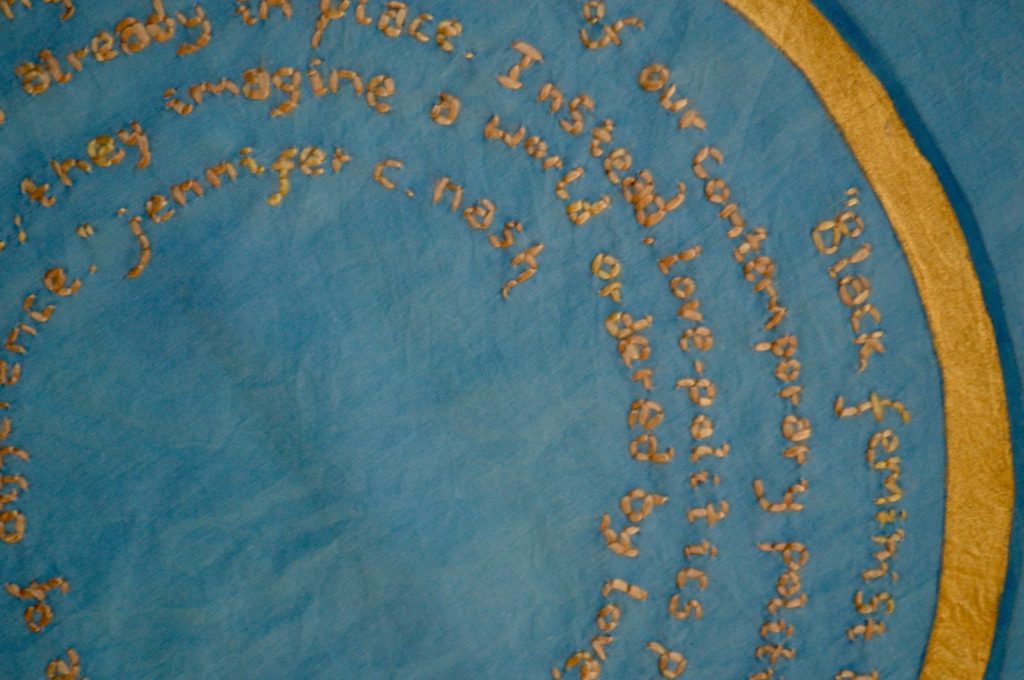
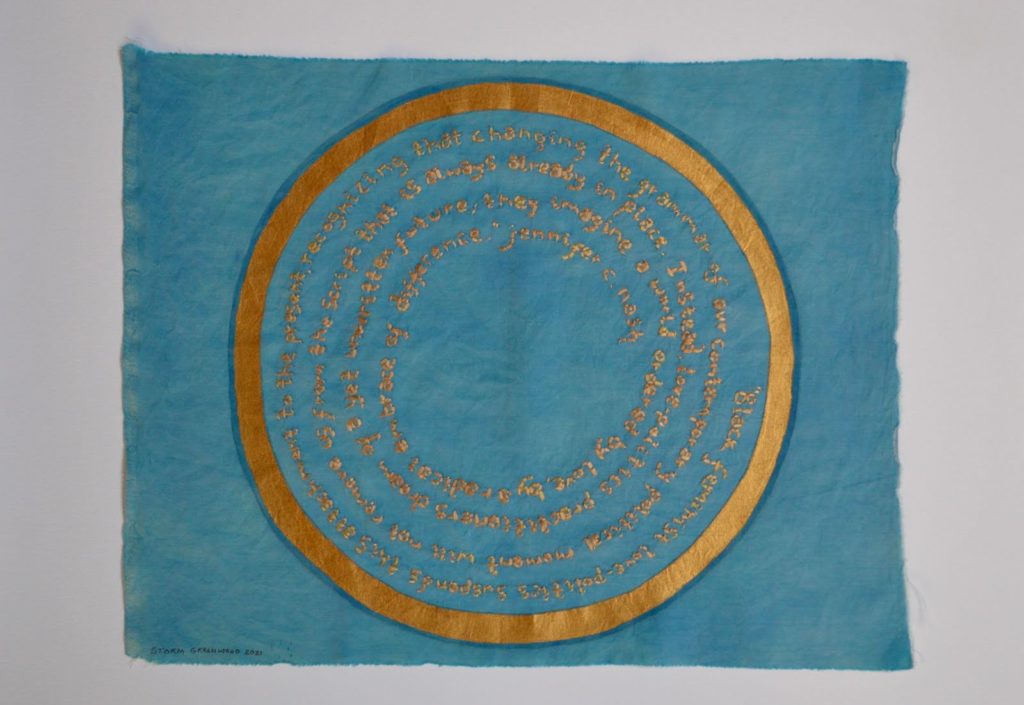
As previously mentioned, ‘devotional citation’ started as a gifting practice and in the months after creating Black Feminist Sacred Sediments I felt the desire to create a series of gift artworks in thanks for the gifts of nash’s scholarship, Dean’s indigo and my mother’s golden thread, as well as Dean and my mother’s informative and inspiring writing on natural dyeing. Wanting to honour the entanglement of these gifts I decided to create a triptych on paper dyed with Dean’s indigo, embroidered with my mother’s thread and painted and printed with ink from London Pigment. I found resonant citations from the work of all three researchers and dividing those citations across the three panels created three artworks that each feature two halves of two different citations. These three panels have been gifted to jennifer c nash, Jenny Dean and my mother, Deborah Barker, each of them receiving half of their own citation and half of the citation from another’s work. The plants drawn on the panels are the plants involved in dyeing the materials: two Japanese indigo plants and one Arabian Night dahlia plant.
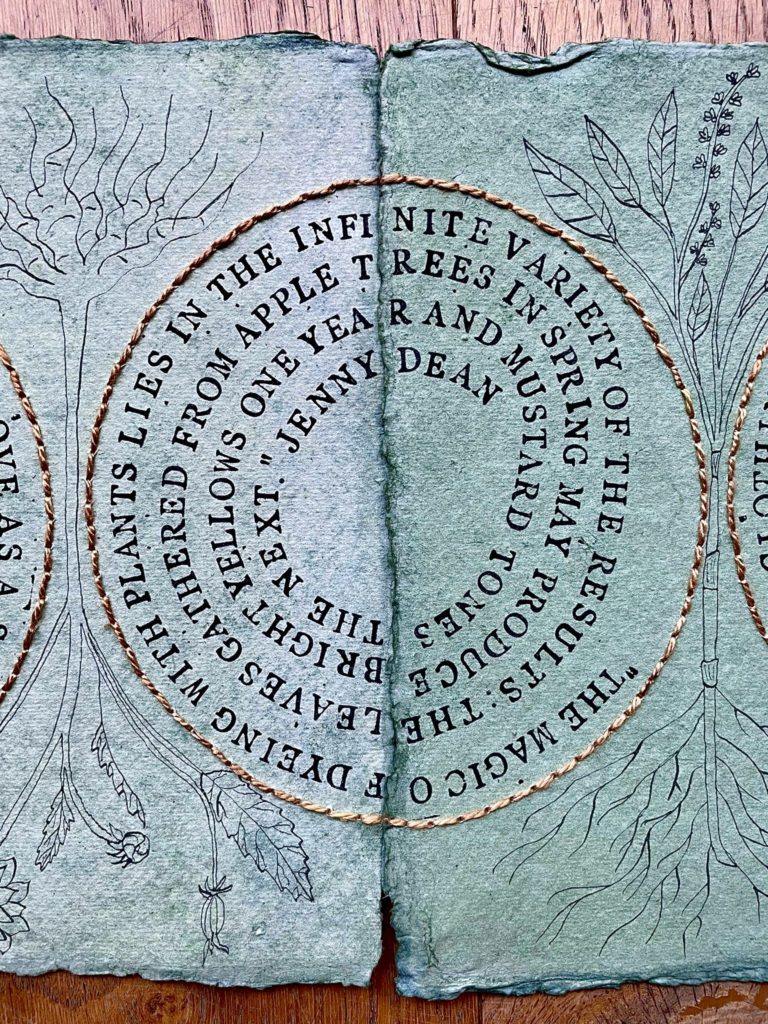
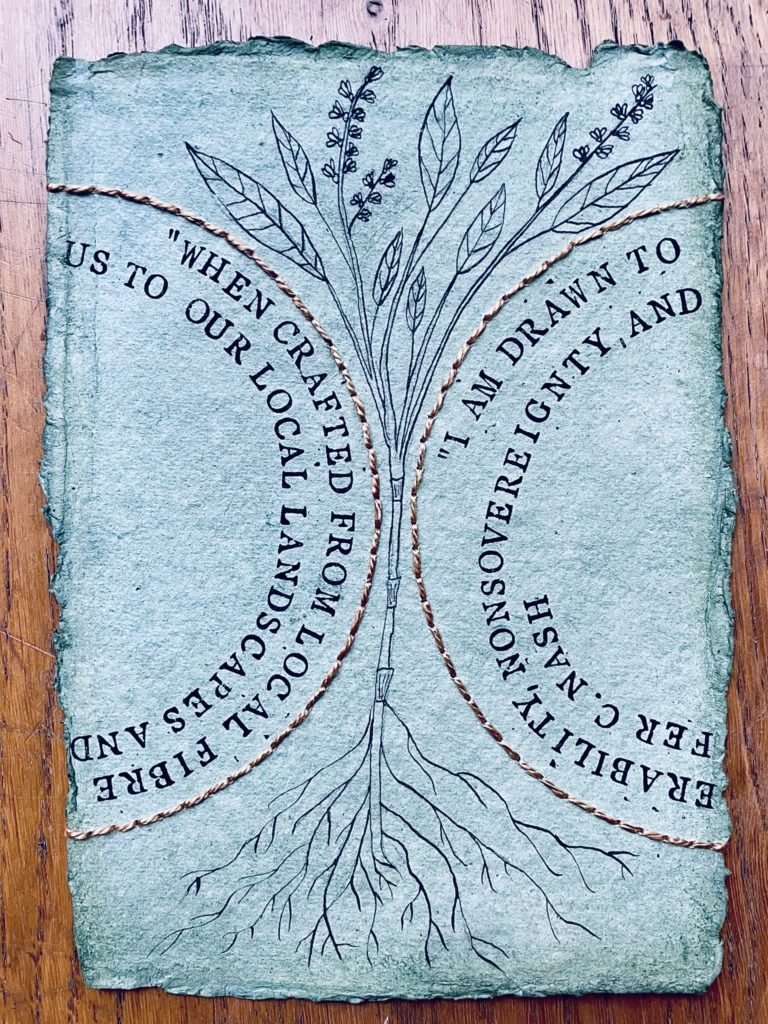
It has been a pleasure and a privilege to meet materials as co-creators and realise the beauty of an integrated praxis, whereby the ethics and aesthetics of the critical citations and the natural materials come together to create the work. As my indigo plant flowers in the garden, I look forward to gathering the seeds and planting them again in the new year, for further experiments in natural dyeing.
The final ‘devotional citation’ for this piece is a note to honour my partner, Giulia Carla Rossi. Both this article and the triptych were created with one hand after breaking my wrist and neither would have been completed without her love and support.
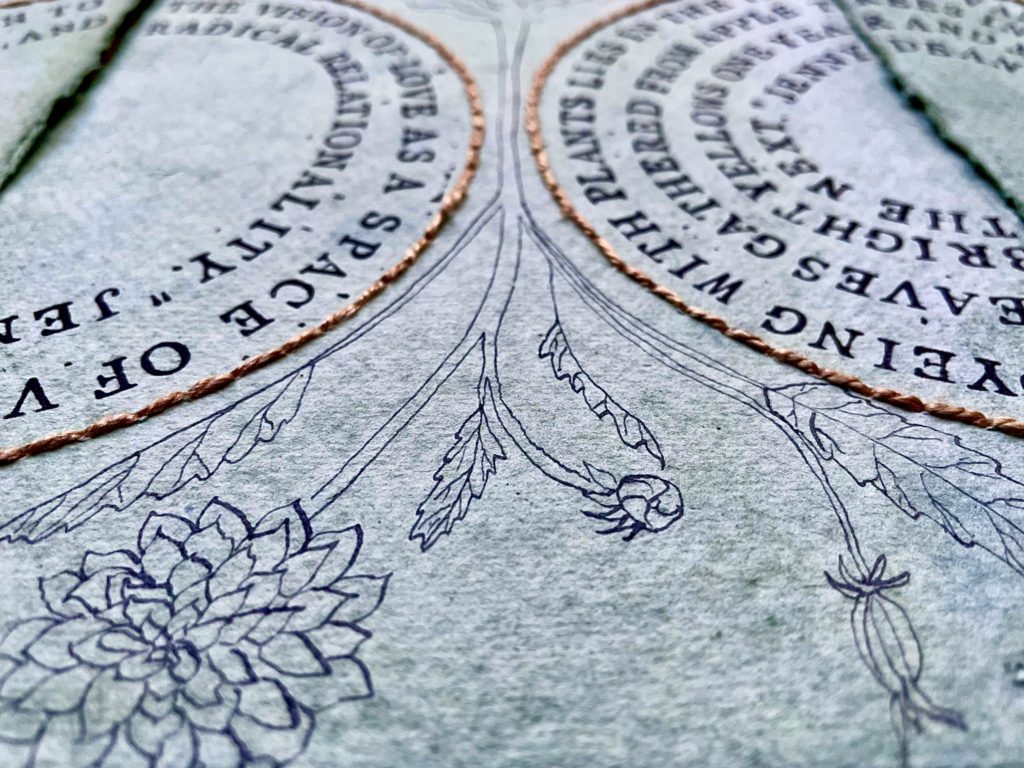
Featured Artworks
Greenwood, Storm (2021), Black Feminist Sacred Sediments. Featuring a citation from: nash, jennifer c. (2011), ‘Practising Love: Black Feminism, Love-Politics, and Post-Intersectionality’, Meridians, Vol. 11, No. 2, pp. 1-24
Greenwood, Storm (2021), Indigo Triptych. Featuring citations from: Barker, Deborah (2021), ‘The Fibershed’, The Lisome, issue 2: Rewilding, pp. 22-27, Dean, Jenny (2010 [1999]), Wild Colour: The Complete Guide to Making and Using Natural Dyes, Penguin Random House USA and nash, jennifer c. (2019), black feminism reimagined: after intersectionality, Durham: Duke University Press.
REFERENCES
Text Sources:
Barker, Deborah (2021), ‘The Fibershed’, The Lisome, issue 2: Rewilding, pp. 22-27.
Dean, Jenny (2010 [1999]), Wild Colour: The Complete Guide to Making and Using Natural Dyes, Penguin Random House.
nash, jennifer c. (2011), ‘Practising Love: Black Feminism, Love-Politics, and Post-Intersectionality’, Meridians, Vol. 11, No. 2, pp. 1-24.
nash, jennifer c. (2019), black feminism reimagined: after intersectionality, Durham: Duke University Press.
Skantze, P.A. (2003), Stillness in Motion in the Seventeenth-Century Theatre, London: Routledge.
Material Sources:
Carbon black ink (2021) made by London Pigment with charred wood collected in London, rain water, oak gall and gum Arabic.
Cotton rag paper (2021) from Khadi Papers .
Dahlia dyed peace silk thread (2021) gifted and hand dyed by Deborah Barker with Arabian Night dahlias from Plaw Hatch Farm in West Sussex .
Japanese indigo leaves [persicaria tinctoria] (2021), grown and gifted by Indigo Garden London.
Japanese indigo paint (2021) made by Indigo Garden London with organic British-grown Japanese indigo, water, gum arabica, vegetable glycerine and thyme oil.
Japanese indigo plant [persicaria tinctoria] (2021), grown and gifted by Jenny Dean, seeds from Bailiwick Blue.
Royal Gold paint (2020), C. Robertson and Co. London. [1]
Notes
[1] This is an example of an art material I purchased before moving towards sourcing sustainably made products. I have been unable to uncover further information about the provenance of the materials or production of this paint.
WHO SUPPORTS US
The team of MAI supporters and contributors is always expanding. We’re honoured to have a specialist collective of editors, whose enthusiasm & talent gave birth to MAI.
However, to turn our MAI dream into reality, we also relied on assistance from high-quality experts in web design, development and photography. Here we’d like to acknowledge their hard work and commitment to the feminist cause. Our feminist ‘thank you’ goes to:
Dots+Circles – a digital agency determined to make a difference, who’ve designed and built our MAI website. Their continuous support became a digital catalyst to our idealistic project.
Guy Martin – an award-winning and widely published British photographer who’s kindly agreed to share his images with our readers
Chandler Jernigan – a talented young American photographer whose portraits hugely enriched the visuals of MAI website
Matt Gillespie – a gifted professional British photographer who with no hesitation gave us permission to use some of his work
Julia Carbonell – an emerging Spanish photographer whose sharp outlook at contemporary women grasped our feminist attention
Ana Pedreira – a self-taught Portuguese photographer whose imagery from women protests beams with feminist aura
And other photographers whose images have been reproduced here: Cezanne Ali, Les Anderson, Mike Wilson, Annie Spratt, Cristian Newman, Peter Hershey
